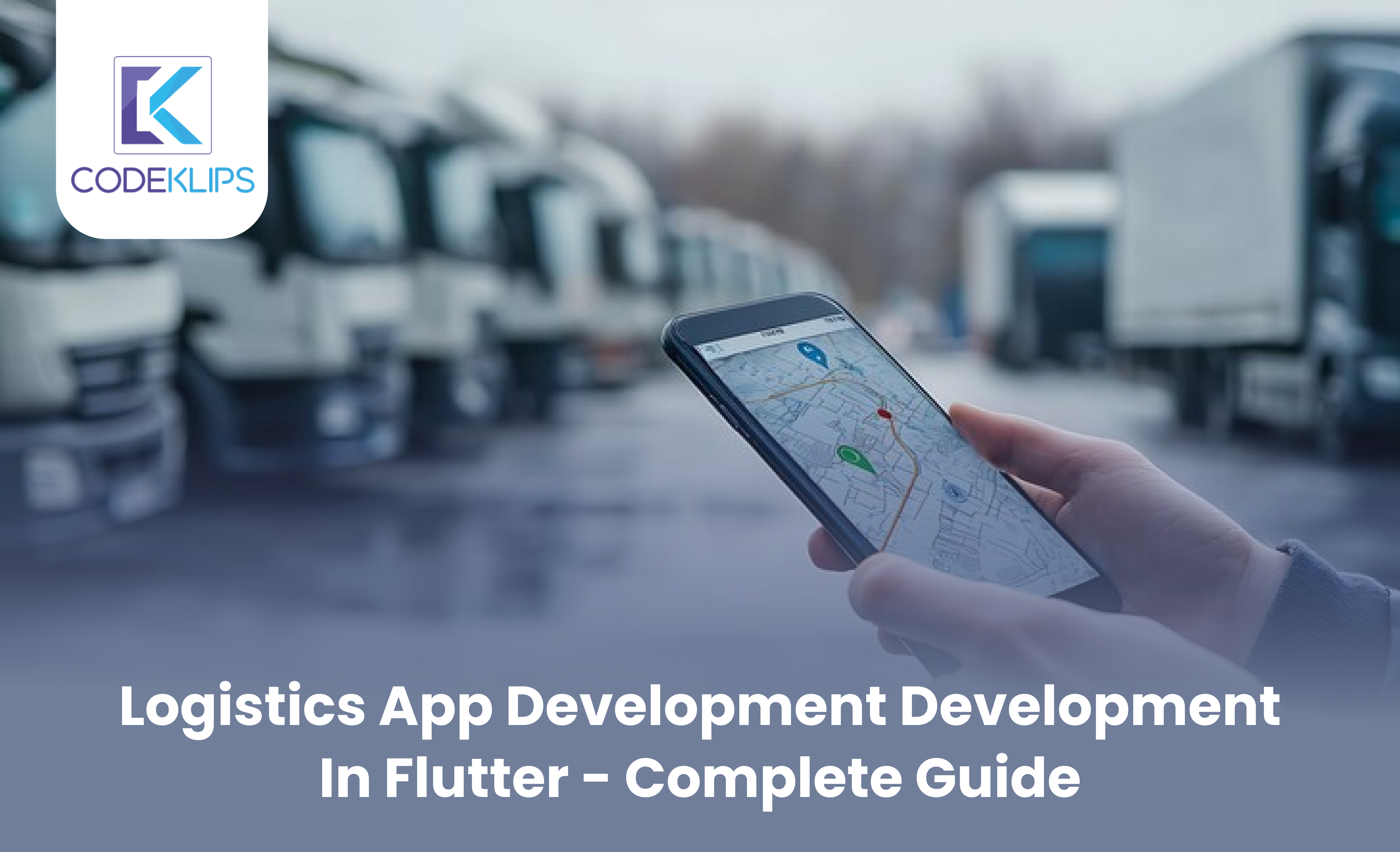3 February 2025
Published by

In today’s fast-paced world, logistics plays a crucial role in the smooth movement of goods and services. With increasing demand for real-time tracking, efficiency, and automation, logistics businesses are turning towards mobile solutions. Logistics App Development Development has become essential for companies looking to streamline operations and improve customer satisfaction. In this complete guide, we will explore how Flutter App Development can be the perfect choice for building a powerful and scalable logistics application.
Global Logistics Market Growth
Flutter is one of the most popular frameworks for mobile app development. Developed by Google, Flutter provides a seamless and fast experience for building applications on multiple platforms using a single codebase. Here are some key reasons why Flutter App Development is ideal for logistics applications:
Flutter allows developers to build apps that work on both Android and iOS with a single codebase. This reduces development time and cost, making it perfect for logistics startups and companies looking for an affordable solution.
With Flutter’s hot reload feature, developers can see real-time changes in the app without restarting it. Additionally, Flutter apps run smoothly due to the Dart programming language, ensuring high performance and responsiveness.
Flutter provides a wide range of widgets and customization options to create an attractive and functional UI. Logistics companies can design user-friendly dashboards, real-time tracking maps, and automated booking features.
Since Flutter supports single-codebase development, companies save money on hiring separate teams for iOS and Android development. This makes it a budget-friendly choice for Logistics App Development Development.
Flutter has a strong developer community and extensive documentation, making it easy for businesses to find reliable developers or a Flutter App Development Company to build their logistics app.
For successful Logistics App Development Development, an app must include features that simplify operations and provide real-time solutions for users. Below are the must-have features:
Logistics apps should provide real-time tracking of vehicles, shipments, and deliveries. GPS integration ensures that businesses and customers can monitor shipments on the go.
Efficient route planning helps in reducing fuel costs and delivery time. AI-driven route optimization can ensure that drivers take the best possible route.
A logistics app should include an automated dispatch system that assigns drivers based on availability, location, and workload. Scheduling tools help manage multiple deliveries efficiently.
Seamless payment gateways such as Stripe, Razorpay, and PayPal allow customers to make payments conveniently. Logistics companies should provide multiple payment options.
A Logistics App Development Development project should include a feature for managing drivers and vehicles. Admins can monitor driver performance, and vehicle conditions, and assign deliveries accordingly.
Timely notifications about shipment status, estimated arrival time, and delivery updates improve customer satisfaction. SMS, push notifications, and emails should be integrated.
Electronic Proof of Delivery (ePOD) ensures that deliveries are completed. Digital signatures, photos, and timestamps serve as valid proof of delivery.
A powerful logistics app should include analytics and reporting tools to help businesses track performance, manage resources, and identify areas of improvement.
Also Read – Native vs Cross-Platform Mobile App Development in 2025
Building a logistics app requires careful planning, design, and development. Below are the steps for Logistics App Development Development in Flutter:
The cost of Logistics App Development Development varies based on the features, technology stack, and team expertise. Here’s an estimated cost breakdown:
| Feature | Estimated Cost |
| Basic Logistics App | $10,000 – $20,000 |
| Advanced Logistics App | $25,000 – $50,000 |
| Enterprise-Level App | $50,000+ |
Hiring a Flutter App Development Company ensures that you get a reliable and high-performing app.
Investing in Logistics App Development Development using Flutter can be a game-changer for logistics companies. The cross-platform capabilities, cost-effectiveness, and high performance of Flutter make it the ideal choice for building logistics apps. Whether you’re a logistics startup owner or a well-established company, a well-designed logistics app can enhance efficiency, reduce costs, and improve customer satisfaction.
Looking for a smart, fast, and budget-friendly Logistics App Development? CodeKlips is here to help! We build powerful Flutter apps that track shipments, manage drivers, and boost efficiency. Get a top-quality logistics app for your business today! Contact CodeKlips – Your Trusted Flutter App Development Company!
Are you ready to build your logistics app? Contact a Flutter App Development Company today to get started!
A logistics app helps businesses manage deliveries, track shipments, optimize routes, and handle payments all in one place.
Flutter allows you to build apps for both Android and iOS using a single codebase, saving time and cost while ensuring high performance.
The cost depends on features and complexity. A basic app may cost around $10,000 – $20,000, while advanced versions can go up to $50,000 or more.
Key features include real-time tracking, automated dispatch, route optimization, payment integration, fleet management, and customer notifications.
Yes, real-time GPS tracking allows you and your customers to monitor shipments from dispatch to delivery.